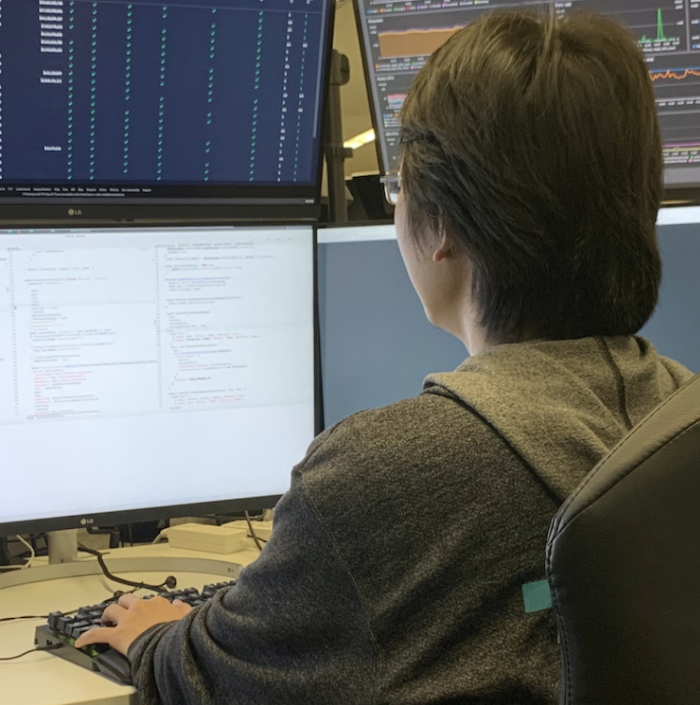
Last week we covered the collapse of FTX as it happened but there’s a lot more to the story. How did FTX grow from a tiny Hong Kong bucket shop into a top three Crypto exchange over the course of just a few years? What was Alameda research and were they ever legitimate? Most importantly, how exactly does an exchange lose track of up to $10 billion worth of customer deposits?
Most of this material is still an educated guess, but the guessers are out there putting together clues from private discussions which have been leaked, the bankruptcy proceedings and first hand dealings shared on Crypto Twitter.
It’s worth noting that there is a whole deep state angle to this story.
I won’t go into it in this article because so little is known (see endnote – ed.)
What we do know is mostly confined to the fact that FTX CEO Sam Bankman-Fried (SBF) was the second largest donor to Democrat political campaigns since 2019. His Co-CEO for part of the FTX Empire, Ryan Salame, was a top 10 donor to the Republican party in the same period.
Sam Bankman-Fried met with SEC Chairman Gary Gensler seeking a “no action” letter on an enforcement matter in April, shortly before SBF began pushing the DCCPA, a bill which the Crypto industry mainly saw as a subtle crackdown on DeFi wrapped in a reasonable sounding regulatory framework.
The biggest question mark is the identity of FTX CTO and co-founder Garry Wang. The man is a ghost with very little online presence and only a handful of photos. Famed short seller Marc Cohodes is under the impression that Wang is a state actor for the CCP.
These questions are important and interesting, but they don’t make for a useful article because of the complete absence of detail.
Alameda Research
Alameda Research, the market maker or crypto hedge fund founded by SBF in Hong Kong during the bull run of 2017 is the start of the rot. The official story is that the firm was formed from a team of young hotshots who learned to trade at Jane Street, a notoriously secretive global market maker which trades more than $10 trillion in securities volume each year.
In January 2018 as Bitcoin was collapsing, Alameda research were performing the Japan arbitrage trade. They purchased Bitcoin in the US, moved it onto Japanese exchanges and cashed in on the gap between markets. The spread was often as wide as 10%. SBF claimed the firm made $10M on the arbitrage over the course of several weeks.
This was a complicated trade. Japanese capital controls are strict with only Japanese nationals allowed to hold bank accounts, making it extremely difficult to get the money out of Japan and requiring a reasonable level of sophistication and corporate legitimacy to pull off.
Following the Japan arbitrage, Alameda went after the “Kimchi Premium”. This was the same type of arbitrage trade, with Bitcoin on South Korean exchanges worth up to 20% more than Bitcoin on US exchanges. The capital controls were tighter, the ability to set up corporate infrastructure in the nation was more restricted and Bitcoin was in the middle of collapsing making trading the asset much more risky.
Some people are suggesting that Alameda lost $10 million on the Kimchi Premium trade, but no one really knows whether any of this story is even true.
I’m deeply skeptical of this entire backstory given what we have now seen about how careful SBF is with his public image.
It’s entirely possible that this whole story was a fabrication to paint the picture of a boy genius trader with a Jane Street pedigree striking out on his own in Crypto land.
Completely Absurd Fundraising
In early 2018, Alameda Research established headquarters in Hong Kong. While SBF was a complete unknown to Crypto insiders at the time, Alameda Research was making a name for itself, frequently up the top of the Bitmex trading leaderboard.
Crypto markets in 2018 were very different to the last few years. While 2017 had seen a burst of activity during Bitcoin’s bull run, volumes were still tiny and there were very few professional firms taking the asset class seriously.
It’s completely plausible that in the absence of professional market makers, Alameda Research could have done very well. It also seems likely that the edge that such a small team had would have disappeared quickly as the market became more professional. Alameda Research only had a handful of employees. Nowhere near enough to build and execute a sophistical algorithmic market making strategy, such as those employed at Jane Street.
In December 2019 an investment pitch deck for Alameda Research circulated among Crypto insiders. The firm was seeking to raise $200 million in debt funding and was offering 15% payments on the debt. The pitch itself made ridiculous claims about the firm’s edge and was riddled with red flags.
“High Returns with no risk – These loans have no downside”
Insiders that viewed the pitch deck were confused. The whispers within the industry were that this firm was highly profitable yet they seemed desperate to raise $200 million. Most stayed away and it’s unclear whether or not the fundraising was successful.
Launch of FTX
FTX was founded in May 2019 but had very little volume until the following year when they established the regulatory status to allow US customers to trade. FTX later acquired Blockfolio to obtain additional US licensing and the bones of a trading app. Even with this boost in volume, FTX was considered an unfavorable exchange to make markets for among established industry participants.
The presumption was that Alameda Research was an embedded market maker that was given an unfair advantage on the platform and rival firms stayed clear.
At the time SBF was still the CEO of both companies. There were claims of a separation of the firms, but it was known that they both operated out of the same offices in Hong Kong. It was rumored that Alameda had full access to customer position data and would hunt for liquidations.
FTX was seen as a shady offshore bucket shop.
By early 2021 little had changed in the industry perception of FTX, but volume was growing. In January SBF was busy arguing on Twitter, leading to the infamous “I’ll buy as much Solana as you have, right now, at $3” tweet. He was not taken seriously until later that year when this huge Solana bet seemed to pay off.

FTX gains Legitimacy
By the middle of 2021, with Crypto in a raging bull market and FTX capturing significant market share, the exchange became too large to ignore. A big part of the story was China putting in place another round of Crypto bans in September which forced many major Crypto traders and market makers to find new venues to trade.
Zhu Su, founder of disgraced Crypto Hedge fund Three Arrows Capital said recently that he had moved his fund’s trading from Huobi and Okex to FTX and Binance in the wake of the China ban.
FTX gave them extremely favorable terms.
A big reason that firms began to feel comfortable with FTX was the splashy fundraising FTX was able to pull off. Market participants assumed that among the billions of dollars of venture capital money that had been invested in FTX, someone had done basic due diligence on the firm. We now know that during these heady days of free money SBF was demanding investment commitments quickly from VCs or he would move on to the next phone call.
There was a giant line of VCs desperate to get into an FTX round.
The July fundraising list was a who’s who of Silicon Valley VC. Led by Sequoia, the round included Softbank, Temasek and VanEck. Apparently none of these firms insisted on even the most basic corporate controls, like installing a board of directors. A later round included a strategic investment from Blackrock. FTX was a blue ribbon investment.
They all needed Crypto exposure now and FTX was the hottest Crypto startup in town.
The other piece of the puzzle was that trading firms were now making money on FTX, when before they were simply getting their positions hunted by Alameda. Leverage was handed out in ample servings. Compliance was lax. Payouts were quick. It seemed to most that FTX had moved on from its shady beginnings to become a legitimate venue for market makers to use.
Tokens
A giant part of understanding exactly what went down at FTX is understanding the Tokens they had launched or partnered with. In 2019 FTX launched FTT, an Ethereum ecosystem token which represented a cut of exchange fees and offered discounts to traders for holding it. It was the same model that Binance launched their token with in 2017. Tokens would be bought out of the market with a portion of exchange profits on a regular basis, delivering a return to investors.
A huge portion of FTT tokens were held on the FTX balance sheet as an asset.
Even more egregious were the Solana ecosystem tokens which FTX helped launch. The leaked balance sheet showed that FTX had large holdings of Serum, Maps and Oxy.
It showed Serum tokens marked as a $2.2 billion asset. Available market cap at the time was less than $500 million.
We don’t know for sure, but it seems likely that loans were taken out backed by FTT and other minor tokens.
Essentially, it seems that SBF invented his own currency from this air and then took out US dollar loans against it from anyone that would offer.
We haven’t heard from any major Crypto lender about whether or not they took FTT as collateral. We may never hear an admission on that point. What we do know is that Solana DeFi, where SBF had significant influence, largely took these minor tokens as collateral for loans on much more generous terms than seems reasonable now.
And why wouldn’t Crypto lenders offer loans to FTX on whatever collateral was offered? FTX was the fastest growing exchange in industry history. It had prestigious investors. Its CEO was throwing around cash on advertising and political donations. Surely FTX was profitable enough to service their loans.
So what happened to the money?
When FTX blew up there was a balance sheet hole of somewhere between $6-10 billion. It was reported as “missing customer funds” but judging from recent public comments made by SBF it seems more likely that there was a complex web of loans and cross company funding arrangements than just straight up theft of customer assets.
An underreported part of this story which fills in a key gap is that the offshore FTX entity apparently didn’t have its own bank account. Wires to the offshore exchange would go directly into a bank account held by Alameda Research. It seems that FTX didn’t secretly transfer customer funds to its associated hedge fund, it probably didn’t even make loans between companies.
The most likely explanation is that Alameda Research just had direct access to customer funds which were wired to them.
While shocking, it wouldn’t be as egregious if the FTX terms didn’t explicitly say that assets were held on trust for customers. FTX wasn’t supposed to touch customer funds once they were deposited. Maybe that’s the whole point, that SBF was relying on some bizarre technicality or legal fiction to convince himself that he had the right to deal with customer assets. Did I mention that both of his parents are compliance lawyers, with one a leading expert on tax havens.
If there’s anyone that could access the advice to set up a complex piece of legal fiction entitling him to pilfer customer funds in a defensible way, it’s SBF.

Liquidations
That only explains how Alameda Research got access to customer funds, but how did they lose the funds? Alameda Research is a market maker primarily and was the key integrated market maker on FTX. Among other things that gave Alameda the ability to purchase liquidated positions of customers, likely at a huge discount.
In a bull market this is a hugely advantaged position to be in. Say Bitcoin drops 5% in an hour and longs get liquidated, Alameda was able to purchase those long Bitcoin positions and then resell them later, after the liquidation cascade was over and price had recovered.
Alameda was exempt from liquidation on FTX, so they could hold underwater positions for as long as they wanted without being forced to close them.
In a bear market, Alameda would likely accumulate underwater positions that they couldn’t get out of without incurring a large loss. Other market makers will generally sell a liquidated position off as soon as possible, to avoid being liquidated themselves. This doesn’t appear to be a check and balance that was in place for Alameda’s operations on FTX.
Another key feature of the leverage trading offered at FTX was cross asset collateral. Essentially this means that leverage was offered on the entire portfolio of a customer. There wasn’t a segregation of collateral, users could simply offer up a mixed list of tokens and take margin loans against the whole pie. This included FTT and Serum at much more generous collateral ratios than other exchanges offered.
Whatever low quality collateral you had, FTX would take it, and it seems that it would end up on Alameda’s books when a customer was liquidated.
Luna Eclipse
In a collapsing market, this lack of controls over Alameda is potentially disastrous. Luna had the most high profile collapse in the history of Crypto tokens in May this year, losing 99.7% of its value in a week before getting as close to absolute zero as possible. FTX and Binance were the major venues for trading the Luna collapse. Traders bought the dip on leverage all the way down.
It seems likely that Alameda took all of those liquidated positions onto their own balance sheet.
Luna started its collapse at around $90. The following week it was at essentially zero. There is no way that Alameda could have sold off all of those liquidated customer positions as the token collapsed. This type of liquidation transaction is known as “toxic flow” and is a surefire way to bankrupt a market maker.
If FTX’s famously specialized liquidation engine simply meant that customer positions were shunted onto the Alameda balance sheet to be cleared at a later date, then the amount of toxic flow from junk tokens in the last year would build up quickly.
This seems to be the only way the size of the hole makes any sense.
Other Problems
If we assume that Luna blew a giant hole in the balance sheets within the FTX empire then what happened next makes a whole lot more sense. SBF went on a buying spree as Crypto lenders collapsed, backstopping insolvent firms and being proclaimed as Crypto’s JP Morgan.
In the cold light of day a more likely explanation than wanting to save the industry is wanting to save himself.
If insolvent Crypto lenders like Voyager and Celsius had given loans to FTX, taking FTT and other minor tokens as collateral then those tokens would be seized and sold into the market during a bankruptcy, cratering the price and liquidating FTX loans with other lenders. Don’t forget, for tokens like Serum, FTX held and likely pledged as collateral more than the entire free float on the market.
All of this isn’t to say that funds didn’t go missing in other ways though.
According to the Bankruptcy filings, FTX had loaned more than $1 billion to SBF individually and $2.3 billion to his investment company, Paper Bird Inc. There were also 9 figure loans to other executives and Bahamas real estate purchased by SBF’s parents and associates worth $300 million. There are even suggestions that the $420 million meme fundraise in October 2021 basically just ended up in the pocket of SBF, rather than productively invested in the company.

It seems like the FTX balance sheet was used as a slush fund for SBF.
None of this in any way can add up to $6-10 billion in stolen customer funds and it’s unlikely that the mechanism was brazen theft. The scenario outlined above, poor trading controls at Alameda creating bad debt within the corporate structure and a CEO that was scrambling to keep the empire afloat, is far more likely. This also casts a new light on the “generous terms” offered to other major market participants in 2021.
Taking VC money
What if Alameda’s goal wasn’t to make money, but to lose money to other traders in a perverse growth hack used to attract the next round of “smart money” investors?
After all, at best Alameda had been making a few hundred million from trading over the course of its existence and likely much less than that. As spreads closed with more market makers flooding into the asset class it’s much easier to take money from Sequoia and Softbank than it is to make money trading.
Running an unprofitable casino is a terrible business, but selling an unprofitable casino that looks extremely busy to a private investor is a fantastic business.
This part of the story seems like the inevitable end state of the 2010s dominance of Venture Capital and private investing. After a decade of easy money, low interest loans and an insatiable appetite for tech investments we were bound to see someone game the system. In 2021 VCs were not doing diligence, they were shoving newly raised funds into startups as fast as possible. Venture capital firms invested $643 billion in 2021. Almost double the pace of 2020 and five times as much as was committed in 2012.
For context, noted scam company Theranos raised $1.4 billion over 13 years. FTX raised $1.8 billion in only 3 years.
The entire story of the growth of FTX is a story of the driving forces of tech stock investing being applied to Crypto and fintech. The problem is that when a social media company blows up, users just lose their photos and social graph. When a fintech or Crypto company blows up, customers lose their funds and lives are ruined.
A big part of the problem with FTX was that tech growth hacking and the infinite pot of VC money was applied to financial services with little regard for the safety of users. No one did the diligence. The regulators were asleep at the wheel.
“Grow fast and break things” isn’t an appropriate model for the financial sector.
We Have Questions…
This article mostly dealt with how FTX managed to grow so fast and then blow up so spectacularly but it didn’t touch on the why. As stated in the introduction, there are some major question marks about state entanglement, potential involvement of intelligence operatives and the corruption of captured regulators are all major open questions that I just don’t have answers to.
Was FTX a plant to bring down the Crypto industry and justify tighter regulation?
Was FTX a front for money flowing from Crypto traders and Tech VCs into Democrat coffers?
Why is the mainstream media reporting on this event as if SBF is just a failed entrepreneur who dreamed too big, rather than a fraud who appropriated customer funds?
Who was behind the success of FTX? Who is Gary Wang?

We likely won’t ever get satisfactory answers to these questions. The family political links between major characters in this story are deeply suspicious. As one Crypto Twitter account that has been covering the news relentlessly said:
“This FTX fiasco is *really* doing its best to confirm every single conspiracy theory anyone has ever had about anything.”
Next week in the conclusion of this three part article I’ll cover some of the fallout surrounding the FTX collapse that is important to understand and the lessons being learned by the industry in its attempt to rebuild.
Endnote
[A good place to start down the deep state rabbit hole in all this is Mathew Crawford’s ‘A Grand Unified Theory of FTX’ – which I printed off to read and it clocks in around 65 pages – markjr]
Today’s post is from contributing analyst Scott Hill. To receive further updates of this series and our overall investment thesis for digital assets (even in this climate), subscribe to the Bombthrower mailing list.


The following is not a statement of my own position. Just looking for feedback, insight, etc on this perspective:
https://www.tfp.org/crypto-currency-meltdown-is-a-lesson-on-the-nature-of-money-and-wealth